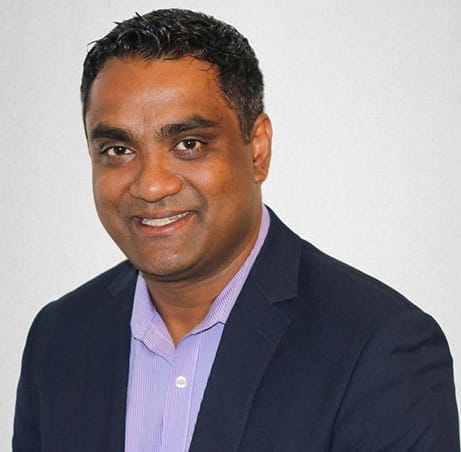Healthcare, Interoperability, and HL7®
Author: Sambit Ghosh | | October 11, 2022
A problematic challenge facing today’s health care community is that of “interoperability.” ‘Interoperability’ refers to the “connectedness” of health care providers who jointly provide different care services to a single patient.
The work of each provider impacts the work of the others, so there must be communication among them to ensure that their individual services don’t conflict with or impede their joint patient’s health. Today’s technologically advanced, cloud-driven environment provides the digital tools and standards to establish and maintain those highly sensitive and confidential communications.
Healthcare Communications at the Application Level
In 2009, the American Congress passed the “Health Information Technology for Economic and Clinical Health Act” (HITECH), which introduced America’s health care community to the term “Meaningful Use.” The “Meaningful Use” rule mandates that U.S.-based healthcare practitioners use certified electronic health record (EHR) systems to maintain their patient’s documents and records. These EHR systems ensure that health-related services are of high quality, safe, and efficient while engaging patients, improving care coordination, and improving public health overall.
One critical aspect of achieving ‘meaningful use’ is maintaining reliable and fruitful communication among the various care providers who are all caring for a single individual patient. In most health care cases, a primary physician orders tests, second opinions, and/or additional services while seeking or treating a diagnosis. Ancillary service providers, including labs, therapists, and imaging professionals, to name just three, send their results to the primary physician for analysis and incorporation into the patient’s file.
These days, in almost all cases, those document transmissions occur electronically through a certified EHR system. To ensure that messages flowing into the EHR file are coherent to and understandable by affiliated care providers, healthcare practitioners today engage in healthcare messaging standards that are governed by “HL7®,” a set of standards developed by the nonprofit HL7® International.
HL7® International has over 1,600 members in over 50 companies, all of whom maintain this framework governing the exchange, sharing, integration, and retrieval of electronic health information.
The acronym, ‘HL7®,’ is short for “Health Level 7®,” which is a combined acronym of healthcare and technology language.
- The word ‘health’ obviously refers to the industry in which the messages are generated.
- The ‘level 7’ phrase refers to the digital application through which that health-related information is transmitted.
- In technology terms, ‘level’ refers to ‘Layer 7’ in the Open Systems Interconnection (OSI) model of application and network communications.
- Application functionality occurs at level 7 within the OSI model.
Consequently, the acronym ‘HL7®’ indicates that healthcare providers’ messaging must comply with rules applied to the OSI-compliant healthcare apps that carry those messages.
The American National Standards Institute (ANSI) has certified the use of these apps, and today’s HL7® Version 2 applications are now operating under the standards established by the 2015 HL7® edition, which is kept current by an international group of healthcare technologists, “Fast Healthcare Interoperate Resources®” (FHIR®). Users must implement the most recent HL7® FHIR® applications by December 31st, 2022.
HL7® Standards
The HL7® standards span records generated by healthcare professionals and their patients as well as by records shared between healthcare professionals. The standards ensure that digitally transmitted confidential patient information is appropriately packaged and messaged from one party to another, using identical language, data types, and structure to ensure seamless integration between health care practices. The purpose is to create a single, comprehensive, and informative medical file that encompasses all aspects of the single patient’s health reality so that current and future health care providers will know their patient’s healthcare concerns and treat them appropriately according to their actual status.
There are four sections included in the standards:
Section 1: Primary Standards
There are eight subsections in Section 1:
a) Clinical Document Architecture (CDA),
b) Electronic Health Records (EHR),
c) FHIR®,
d) HL7® Version 2,
e) HL7® Version 3,
f) Arden Syntax,
g) CCOW (Clinical Context Management Specification), and
h) Cross Paradigm/Domain Analysis models.
Of these, the first three are most significant for day-to-day medical office operations. The FHIR® standards are discussed above.
Section 1a: Clinical Document Architecture
Clinical document architecture provides a popular and flexible standard to define the structure of medical records, including discharge summaries, progress notes, etc. Using a common vocabulary in these documents ensures that all users understand the text, images, and other media elements included within those records.
The CDA architecture creates documents using a standard design framework that includes six characteristics:
- it’s persistent, meaning the document will remain in use for an extended period;
- it has stewardship, meaning that the organization generating it is trusted and reliable;
- it’s authentic, meaning it is accurate for legal purposes;
- it’s in context, meaning it connects the document to both the patient and the provider;
- it’s whole, meaning the entire document can be authenticated, and
- it is readable, meaning a person can read the material either by hand or through a digital device.
Section 1b: Electronic Health Records
This section provides functional profiles and models to enable the construction and management of 27 types of electronic health records, as those pertain to a variety of medical and health care domains, including behavioral health, child health, clinical research, long-term care, etc. Some of the profiles contain actual formats to use when generating the record; other profiles provide guidance on how to share specific types of information, such as those included in drug prescription programs, and how to apply profiles in particular communities.
Section 2: Clinical and Administrative Domains
The 182 entries in this section provide document and messaging standards for clinical specialties and medical practice groups. HL7® Section 2 standards are applied after primary criteria for the organization have been established.
Section 3: Implementation Guides
These ‘supplemental’ guides augment the information and guidance provided by their related parent standard. For example, Section 3 contains supplemental implementation material regarding dental data exchange standards that apply to the criteria found at HL7® CDA R2.
Section 4: Rules and References
Section 4 provides technological standards for the electronic transmission of messages, including programming structures, technical specifications, and guidelines for software and application development.
Ensuring that your medical practice becomes and remains compliant with HL7® standards also ensures that your business – and your patients – will thrive. Discover how one leading provider of digital healthcare services achieved real-time integration of HL7® records by modernizing its aging application platform.
Related Posts
How to Get External Data in to SharePoint
Microsoft has introduced a new feature called Business Data Catalog for enhanced capabilities in SharePoint to help organizations.
Three Utilities That Transformed the Digital Customer Experience
Find out about why building a digital bridge for utilities customers isn’t optional, and industry customer engagement success stories.
Eight Steps to a Digital Workplace: Part 2
You’ve seen the first four steps… but there are four more steps to go. Stay on track for the digital transformation with these strategies.



